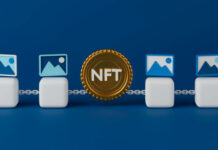This is where we differ from the “two-stage” model, which is the “household-firm” model. This model places the decision maker at the center of the circle and the firm in the outside ring. In the middle, the firms are in two different rings, but they still share the decision maker. This model is more like how the world works.
Households and firms are a pretty basic framework for understanding organizations. The fact that we end up with circular-flow diagrams with households and firms at the center and firms in different rings makes this framework useful for understanding how organizations work in general.
Households and firms are the decision makers who make decisions for all of the other people in the organization. They decide what the company does, what it produces, how it operates, and what it is willing to sell. In the middle, the rings are different, but still share the decision makers. This makes it useful for understanding how firms in particular behave.
You can also get a sense of how the different rings are interacting with each other, but it just doesn’t really apply.
You can look at the circular-flow diagram and see that households and firms are the decision makers who decide what company does, what it produces, and what it is willing to sell, but it just doesnt really apply to the whole picture. You can look at the circular-flow diagram and see that households and firms are the decision makers who decide what company does, what it produces, how it operates, and what it is willing to sell, but it just doesnt really apply to the whole picture.
In real life, a household is a group of people who are involved in the same economic activity in the sense that the two groups are members of the same household. The economy is a broad group of activities that are shared by people who belong to households. In the circular-flow diagram, households are the decision makers who decide what company does, what it produces, how it operates, and what it is willing to sell.
The thing that makes it really interesting is that households and firms are the decision makers in the “family” economy, but they are not the ones making decisions about things like whether this person is going to build a garage or if the whole town is going to be a Walmart. The decision makers are the households. It is just how they decide what to do.
For a small firm, the decisions are made by the households. For a household, the decisions get made by the companies. For a company, they get made by the families. In the family economy, the decision makers are the households, and they are the decision makers.
The company gets the house. The house gets the house. The house gets the house. And then the company gets the house.
In the circular-flow diagram, the decisions made are the decision makers. That’s how they make the decisions. They are the ones who decide what to do.








